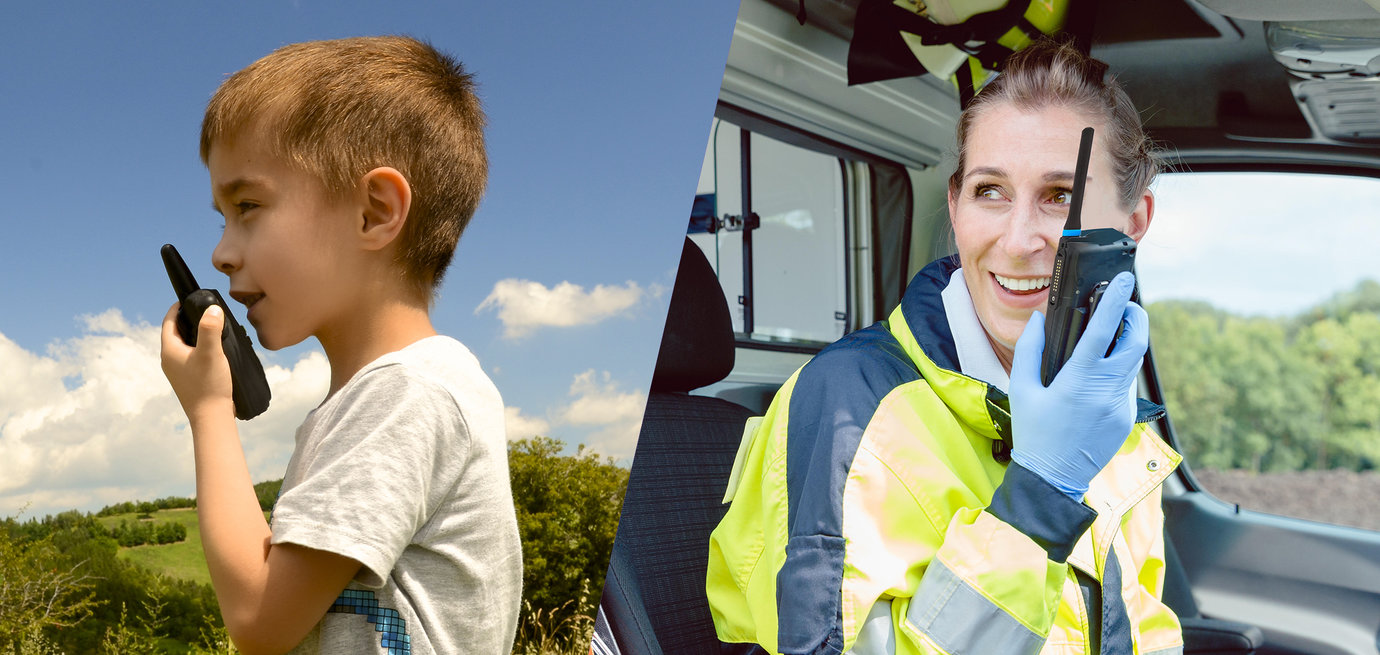Two-Way Radios vs Walkie-Talkies
Do you consider walkie talkies and two-way radios different or the same thing? Ever wondered why the terms two-way radio and walkie talkie are used interchangeably?

Ever tried searching for professional two-way radios but had to explain or refer to it as a walkie talkie in conversation? Or searching for a ‘walkie-talkie’ when you really meant two-way radio?
In reality, you will find that the terms walkie talkie and two-way radio are often used interchangeably and are sometimes even used together to reference the same thing.
Technically speaking, the two are not the same thing, although in some cases they can be since both devices can be carried around when walking to enable communication. To understand the difference, we need to define the terms.
Walkie-Talkie is a term given to the more commercial unlicenced devices, that are available for purchase from some two-way radio manufacturers, but mostly retail outlets. The way they are manufactured also explain the differences between them. Walkie talkies can often be considered an inferior product targeted at people usually needing a basic radio gadget for leisure or fun. When we see walkie talkies for sale in a store, they tend to be mainly for non-commercial use. They are often manufactured with bright colours to attract their target consumer buyers and are often marketed towards children. They have a shorter range, fewer features, are license-free and is often a lot cheaper than two-way radios.
A walkie talkie is a portable two-way radio, particularly one that can be held in the hand. This type of radio, also known as a handy talkie, handheld transceiver, or HT, allows you to talk on the radio while walking around, hence the name walkie talkie.
It comes with pre-set channels that cannot be modified, and work in simplex mode only (Back-to-back with other unlicenced walkie-talkies) so it cannot be used via a repeater to extend the range. It also has a fixed antenna and a maximum Tx power level of 0.5W so the range is limited, and thus can only be used in small areas with no control over channel use- this means it is subject to interference from other users.
As walkie-talkies are cheaper their build quality tends to be inferior to professional portable radios – they have limited protection against water and dust ingress and are not built to military standards so are much more easily damaged or broken.
A two-way radio is a radio that can operate two ways, that is, it has the ability to transmit and receive a radio signal, as opposed to a radio that can only receive These radios are generally used in a more professional capacity.
Licenced commercial and professional portable two-way radios differ from Walkie-Talkie’s as they offer more technical features and functions and can be used with repeaters to extend its range and frequencies to ensure uninterrupted operation.
They can also connect to external antennas (example when in a vehicle) to help extend the range. They require licences to operate the frequencies you use, but this means you have exclusivity to those channels and therefore have uninterrupted use of them without interference from other users.
You wouldn’t for example see police walking around with a walkie-talkie. Their devices are highly specialised, and their voice is also secured with advanced encryption against eavesdroppers – something you will not find in a commercial walkie-talkie. And of course, they need exclusive use of their channels, without any risks of interference from other users.
Two-way radios are also largely used by commercial businesses with medium to large sites like universities, hotels, hospitals, stadium event premises, and retail shopping centres. It is also widely used by emergency services and construction sites as its tougher build quality and IP rating makes it ideal for harsh environments.
Now that we've defined the terms, let's consider the argument. Are these terms interchangeable? Well, yes and no. According to the definition, a walkie talkie is a two-way radio, but a two-way radio is not always a walkie talkie. This is because some types of radios are not portable handhelds, such as a mobile radio mounted in vehicles or wall mounted base stations.
Chris Cant, Head of Product ManagementLooking at the definitions above, we can deduce that all walkie talkies are two-way radios but not all the two-way radios are walkie talkies.
Hytera UK
19 March 2021

